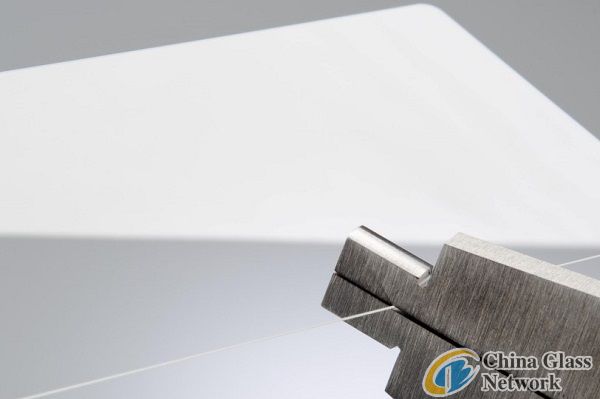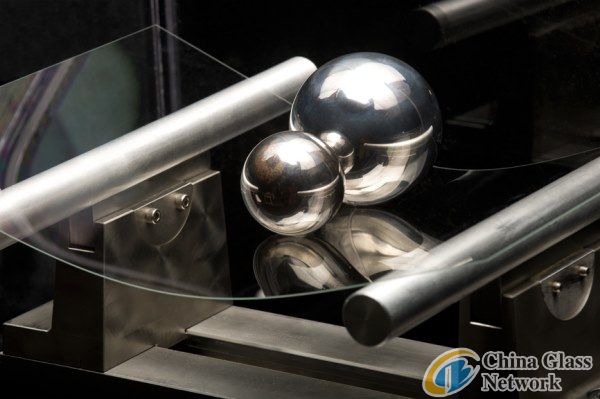Pick up your smartphone. Touch its screen. It's smooth, crystal-clear, and amazingly resilient. Chances are your smartphone is protected by a sheet of Corning Gorilla Glass. But what exactly is this Gorilla Glass? How is it fabricated and what makes it so strong?
In this "How it Works", we'll take you through the history, properties, and uses of Gorilla Glass, one of the most interesting pieces of technology that go into our mobile devices.
History
Gorilla Glass probably has a more interesting path than any other piece of hardware on or in your device. Much like the first edition print of any comic book hero's tale, Corning Glass was born of a science experiment gone wrong.
In 1952, a scientist at Corning placed a piece of photosensitive glass in a furnace for testing. At some point the furnace skyrocketed from 600 degrees Celsius to 900 degrees. Expecting a ruined sample, the scientist was surprised to find an opaque sheet of material rather than a melted blob of molten mess. As the scientist removed the sample, it dropped to the floor. Rather than shatter as expected, the glass bounced.
Unbeknownst to him, scientist Don Stookey had just created a glass-ceramic hybrid.
The new material was lighter than aluminum, stronger than common glass of the era, and as hard as steel. It found it's way into a myriad of products from missiles to microwave ovens, and would later be developed into the household staple named Corningware.
An early 60's study named "Project Muscle" would lead scientists at Corning to research further methods of strengthening glass. Through that study, they found that placing the new glass in a potassium bath to encourage an ion exchange would strengthen the glass. But what's ion exchange?
From the Gorilla Glass website:
Ion exchange is a chemical strengthening process where large ions are "stuffed" into the glass surface, creating a state of compression. Gorilla Glass is specially designed to maximize this behavior. The glass is placed in a hot bath of molten salt at a temperature of approximately 400°C. Smaller sodium ions leave the glass, and larger potassium ions from the salt bath replace them. These larger ions take up more room and are pressed together when the glass cools, producing a layer of compressive stress on the surface of the glass. Gorilla Glass's special composition enables the potassium ions to diffuse far into the surface, creating high compressive stress deep into the glass. This layer of compression creates a surface that is more resistant to damage from everyday use.
So, in short… expand the glass, force larger ions in, force smaller ions out, and when it cools it's all kinds of tough. No wonder it's so resilient. It's already been beaten up more than we could during normal use! The project resulted in what was called "Chemcor". The intent was for the product to be used in all sort of commercial applications. Everything from phone booths to car windshields, even prison glass, was imagined for the new material.

The new material simply didn't catch on commercially. As companies examined their needs and wants, the new compound simply didn't deliver what they were looking for at the time. Car manufacturers were impressed with the resilient glass, but hesitant to adopt it. They eyed it for muscle cars as it was strong and light, but the increased cost seemed unnecessary. The laminated glass in use since the 1930's was doing the job just fine.
Aside from a few orders for safety glasses which were promptly recalled over concerns that the shattering nature in which they broke would do more harm than good, Chemcor was a commercial flop. The new compound showed up in a few hundred AMC Javelins, but other auto manufacturers simply didn't see the need. Without a revenue stream for the new compound, Corning would shelve the device.
Why mobile devices?
Fast forward to 2006, when Steve Jobs and the Apple crew were testing their new iPhone prototype. They noticed normal things like keys or coins that were present in the pocket would damage the device's plastic screen. Determined to find a suitable replacement material, Jobs sent an email to a contact of his at Corning, Wendell Weeks. He tasked Mr. Weeks with finding a suitable glass for his new device. What Jobs didn't know that a full year prior to his request, Corning had begun exploring that concept.
In 2005, the Motorola RAZR V3 got the folks at Corning thinking. Could an industry such as mobile phones be a market for their shelved Chemcor product? The ubiquitous flip phone was selling well, and the folks at Corning were wondering if they had a place in that market. The RAZR used an ultra-thin glass rather than the impact plastic that was the standard at the time. As mobile phones were getting thinner, they could use a glass that was durable. Chemcor was great, but had it's challenges. The specialty glass had only been manufactured to a thinness of 4mm, which simply would not do for a mobile device.
As Apple became enamored with the idea of using this type of glass, they started feeding Corning their desired specs. They needed a glass at 1.3mm, well below half of what Corning ever achieved with Chemcor. A thing Corning hadn't shared with Apple was that Chemcor had never been mass produced. Apple also wanted this glass, which they had no idea didn't really exist, in six months time. But Weeks took a cue from Jobs' book --- he took the risk and said yes to the project. He tasked his scientists with fulfilling a glass that could meet the demands of Apple. They named it Project Gorilla Glass.
Making Gorilla Glass
Glass is made up of sand, plain and simple. Sand, or silicon dioxide, is melted down with limestone and sodium carbonate to create crude glass. For Gorilla Glass, the silicon dioxide is first mixed with other ingredients. Mixing the silicon dioxide with aluminum and oxygen yields aluminosilicate. This gives the glass it's sodium ions, which as discussed earlier are quite important.
Before the process of ion exchange, the glass must be made to that all important thinness needed to be useful in cell phones and other mobile devices. The process by which Corning achieves this is called fusion draw. In this process, the molten glass is fed into a v-shaped funnel until it overflows. When it runs over the edge, the molten glass meets at the bottom and is guided away by rollers. The faster the rollers spin, the thinner the glass is.

It all sounds fairly simple, but the work wasn't done yet. Gorilla Glass had to be different. It had to be better. Sure the new composite would be thin and strong, but it also had to have a visual clarity not yet imagined by Corning. Remember, they originally designed this glass to be clear and strong. They had no designs on glass that was thin and clear but could also take a beating.
Coming so close and not succeeding was not an option. They had the formula and process down for a thin, light, strong material… but it just needed those finishing touches. Traditionally, tempering glass takes place by cooling the outside and letting the molten inside pull the two sides together as it cools. Oddly enough, that method strengthens the glass. This takes time, and was not an option for Gorilla Glass. That cooling process leaves the finished product fairly susceptible to variations in thickness and stress. To achieve the desired results, scientists altered seven parts of the formula while adding a secret ingredient.
Corning needed a home run in Gorilla Glass, and scientists delivered. The new composite was everything they wanted. Strong, light, flexible, clear, thin, and able to hold up to the manufacturing process. Corning had risen to the challenge.
The testing process
So after the compound is mixed, melted, pulled and undergoes ion exchange, the real fun begins. Now is when we learn just how strong this stuff really is. We all know it's scratch resistant and holds up fairly well to normal use in real world scenarios, but how fun would that be? It's time to put Gorilla Glass through it's paces.
In the video below you'll see a sampling of lab testing on the flexibility of the glass. Everything from flexibility to impact situations are imagined. While the glass is not indestructible, it's clearly leaps and bounds better than what we had been using prior to it's application in mobile technology. Testing like this allows scientists to better understand the product and improve on it for future applications.
Beyond Gorilla Glass
Not content to be a leader in devices glass, Corning set out to improve on their original design with Gorilla Glass 2. The Corning website describes it as "up to 20% thinner" and able to enhance our experience. A thinner glass separating the device from your touch could result in better haptic feedback and enhanced response time.
The glass magicians at Corning are also working hard to make glass that is not only strong, but also flexible. The goal is to create paper-thin and flexible sheets of glass, that can be manufactured on roll-to-roll processes, thus greatly reducing the cost of the end product. But that's not the sole benefit of flexible glass --- Corning's upcoming flexible glasses will be more resistant to shattering and also a great fit for the flexible displays that Samsung and others are currently developing.
Moreover, Corning is set to announce Gorilla Glass 3 at CES 2013 in Las Vegas. As you might expected, Gorilla Glass 3 is significantly stronger than previous iterations of the product. According to Corning, Gorilla Glass 3 is three times more scratch resistant than Gorilla 2, will show 40% fewer scratches after use, and maintain 50% more strength after the sheet of glass becomes flawed.
The future is even more exciting.





